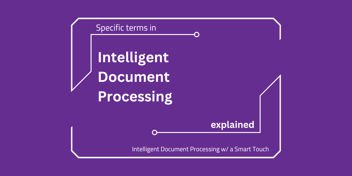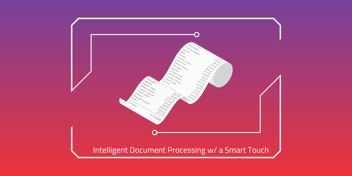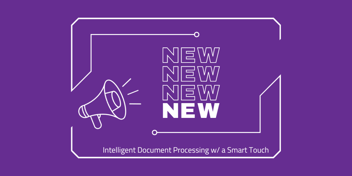While the document processing part of the title needs no explanation — translating document content into meaningful and actionable insights is what businesses have done for a long time, the intelligent term makes all the difference. It stands for leveraging new technologies like natural language processing and computer vision, all linked together into an artificial intelligence engine for automating document processing.
Why do we need IDP?
A 2019 survey conducted by Levvel Research found that 57% of the invoice data is entered manually and 49% of the invoice approvals required 2 to 3 approvals. Correlating this to the explosion of document as information carriers and digital content, the result is that organizations are spending more and more time manually processing documents. The above statistics only take into consideration invoices, but account payable processes are already the most automated processes nowadays.
For other types of documents, such as bill of ladings, customs declarations, transport documents and many others, the percentage of automation is way lower.
What is IDP?
IDP, Intelligent Document Processing, transforms unstructured and semi-structured data into information fit for machine processing by understanding and extracting insights from this data.
Intelligent Document Processing solutions are particularly relevant for document-heavy industries, like logistics, healthcare, banking, or finance. They typically deal with high volumes of unstructured data, such as invoices, sales orders and notes, bill of ladings and customer correspondence.
How does IDP work?
There are several steps a document goes through when processed with IDP software. Typically, these are:
1. Data ingestion
Intelligent Document Processing starts with ingesting data from various sources like emails, shared drives (google drive, MS OneDrive, Dropbox etc), applications or APIs. When it comes to collecting paper-based documents (handwritten documents or not), intelligent document recognition technology integrates with scanners, to speed up the scanning process.
2. Pre-processing
The accuracy of an IDP is highly correlated with the quality of the data fed into the system. Therefore, all the ingested documents must first be “cleaned and groomed”. This will be accomplished by using image processing algorithms for noise reduction, image deskew, despeckle and deformation correction.
3. Classification
For a document to go on the desired, correct business workflow within the company, it is very important to be classified correctly. To classify those inputs, natural language processing algorithms come into play. They put the document down into specific categories based on the language and text analysis. Even if these algorithms for text classification are usually very accurate, Intelligent Document Processing solutions are typically human-in-the-loop. A good IDP will always let the human step in and correct if the classification goes sideways.
4. Extraction and understanding
The cornerstone of Intelligent Document Processing, the data extraction stage, self-explanatorily, in fact, involves extracting insights from the documents. Artificial Intelligence models obtain specific information, like dates, names, or figures from the already classified documents.
There are 2 types of models that are powering IDP software. The first one, less accurate but cheaper, are the generic models trained on vast amounts of subject-matter data. Typically, IDP solutions have a library of several models like invoices or bank statements. The second type which is highly accurate are the custom models specifically trained on enterprise or organization documents. These types of models can reach an up to 99% accuracy.
Once the relevant data is extracted from the documents, the understanding part follows. During the understanding phase, IDP can build meaning and reveal insights from the extracted data. Understanding is domain specific and can enhance significantly the information needed downstream. Since the understanding is domain specific, it is recommended to discuss this with your IDP provider to see how this applies to your domain.
5. Transform and validation
After the understanding stage, IDP tools usually correct common misspellings, transform, and adjust the data to match standard formatting. At this stage, data goes through a series of automated or manual validation checks to ensure the accuracy of the processing outcomes. When a validation fails, IDP will generate a human-in-the-loop task for manually correction.
6. Integration
At this point, we are not discussing about documents anymore, but information that is now prepared to be processed by the organization’s internal systems. Most of the IDP solutions on the market stop here, by dumping all the information to excel or XML files, letting the human to add information manually to their systems. If an automation is needed, the alternative is to use an RPA robot to do this.
However, smarter IDP solutions on the market also include integration interface and necessary connectors to exchange the data with the organization internal systems, such as ERP. More sophisticated ones will even give the user the possibility to build and map internal workflows into the IDP and make the integration as smooth as possible.
Apollo, the most complex data capturing, processing & exchanging platform in Intelligent Document Processing, is an AI powered, self-serving, no code, user customizable platform that intelligently processes multiple flows of various documents. It will automatically extract, process, validate & exchange data between multiple organizations and their various systems.
By fully understanding the text in any type of document, processing, transforming into data & transferring it to any third-party application, Apollo automates the document-centric business processes. It relieves employees from manual, repetitive and demotivating tasks, and allows them to up-skill, as illustrated right here:
Smart things to consider before choosing your IDP solution
On a final note, it’s worth to mention that there are few companies offering various IDP solutions. Before you decide what’s the suitable for your organization, here are a few steps you should consider:
- Detect workflows and processes that IDP needs to improve.
- Conduct in-depth interviews with the company’s stakeholders and external consultants to evaluate the feasibility of an automation pilot.
- Set automation objectives using the SMART criteria.
- Select suitable automation technologies in collaboration with your IT department and/or external automation consultants.
- Do not overcomplicate things.
Once you decided on the IDP solution, create an automation implementation plan consisting in Proof of Concept (POC), initial automation deployment, continuous user feedback analysis, and gradual rollouts across other business units and, ultimately, companywide.
Keep an eye on Intelligent Document Processing w/ a Smart Touch!


